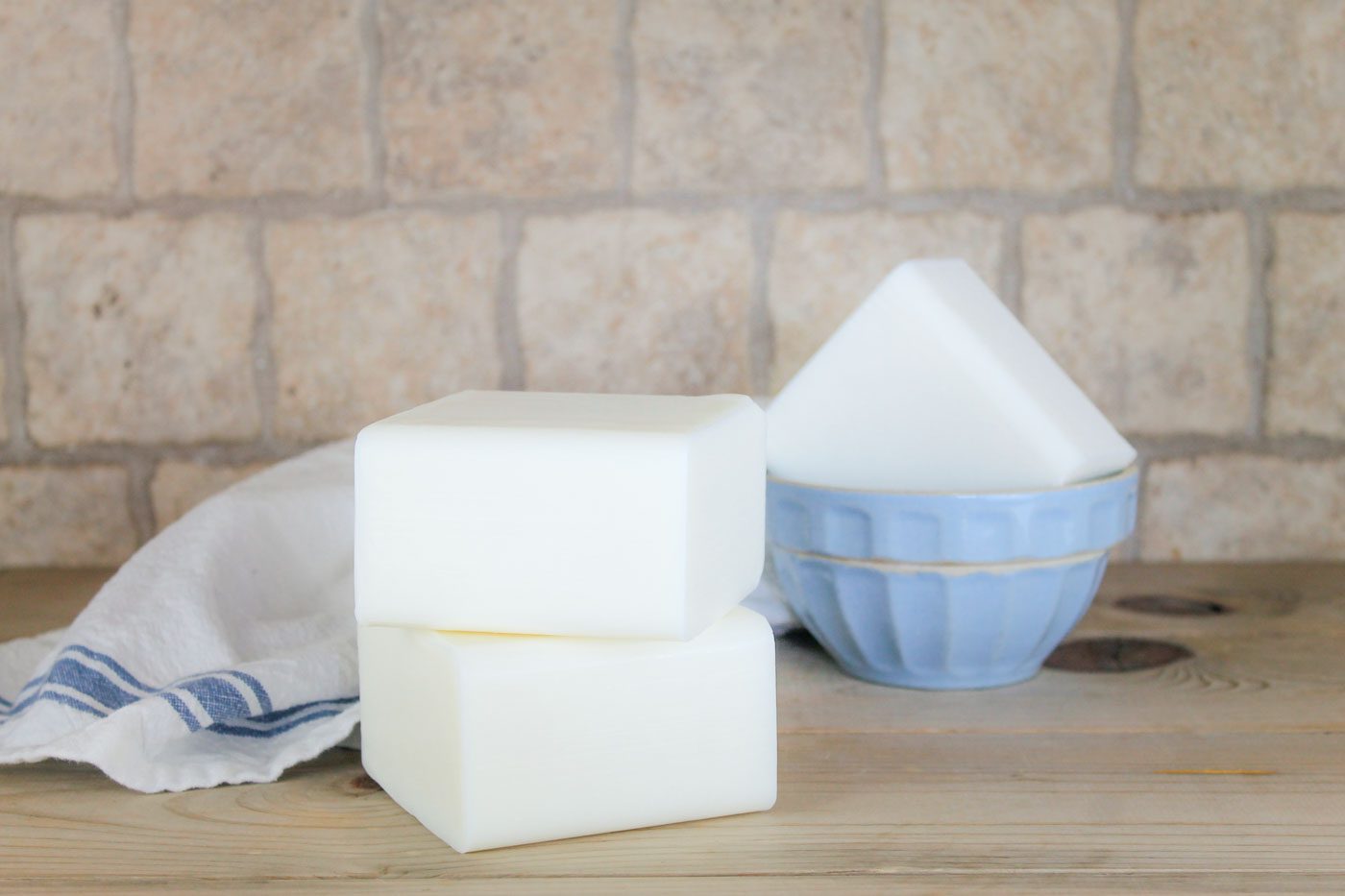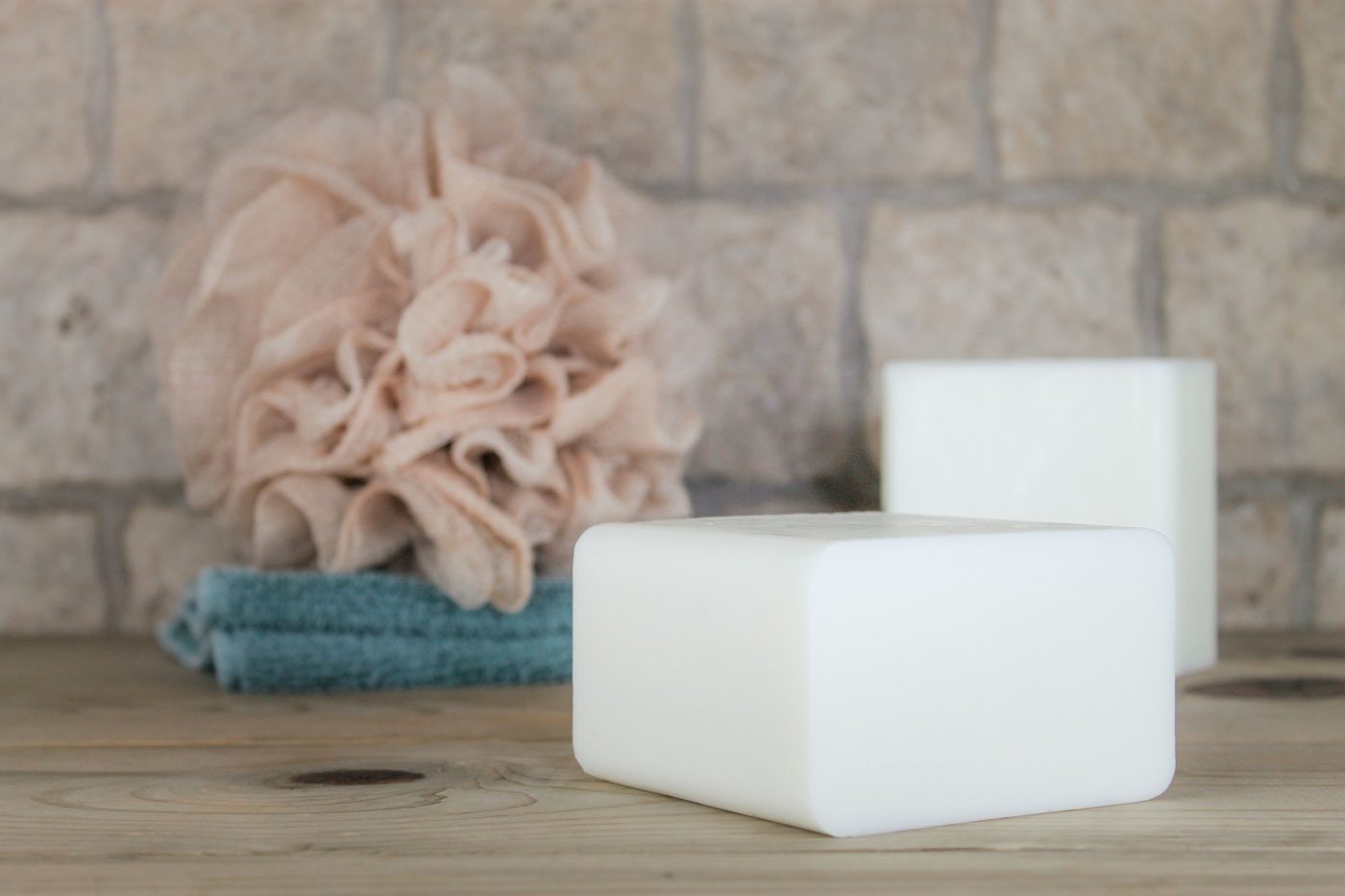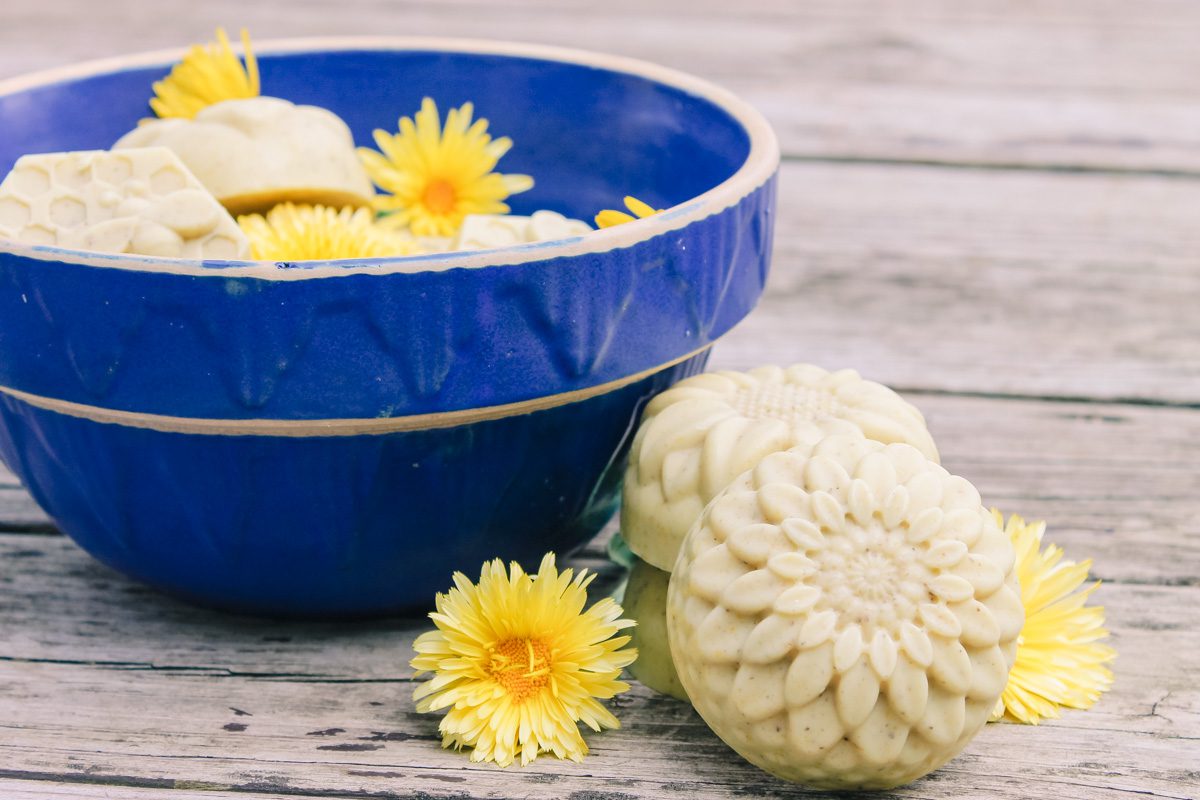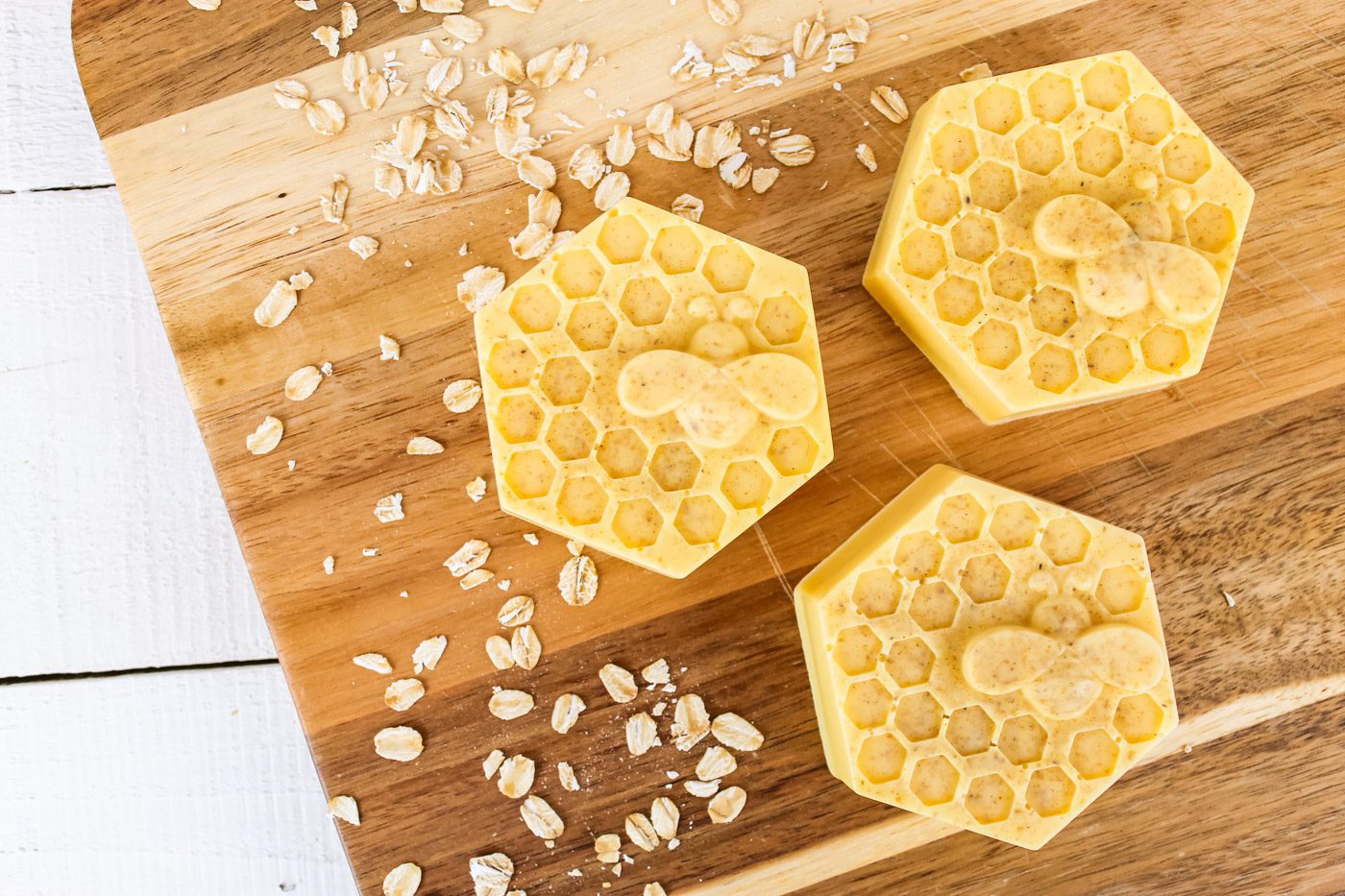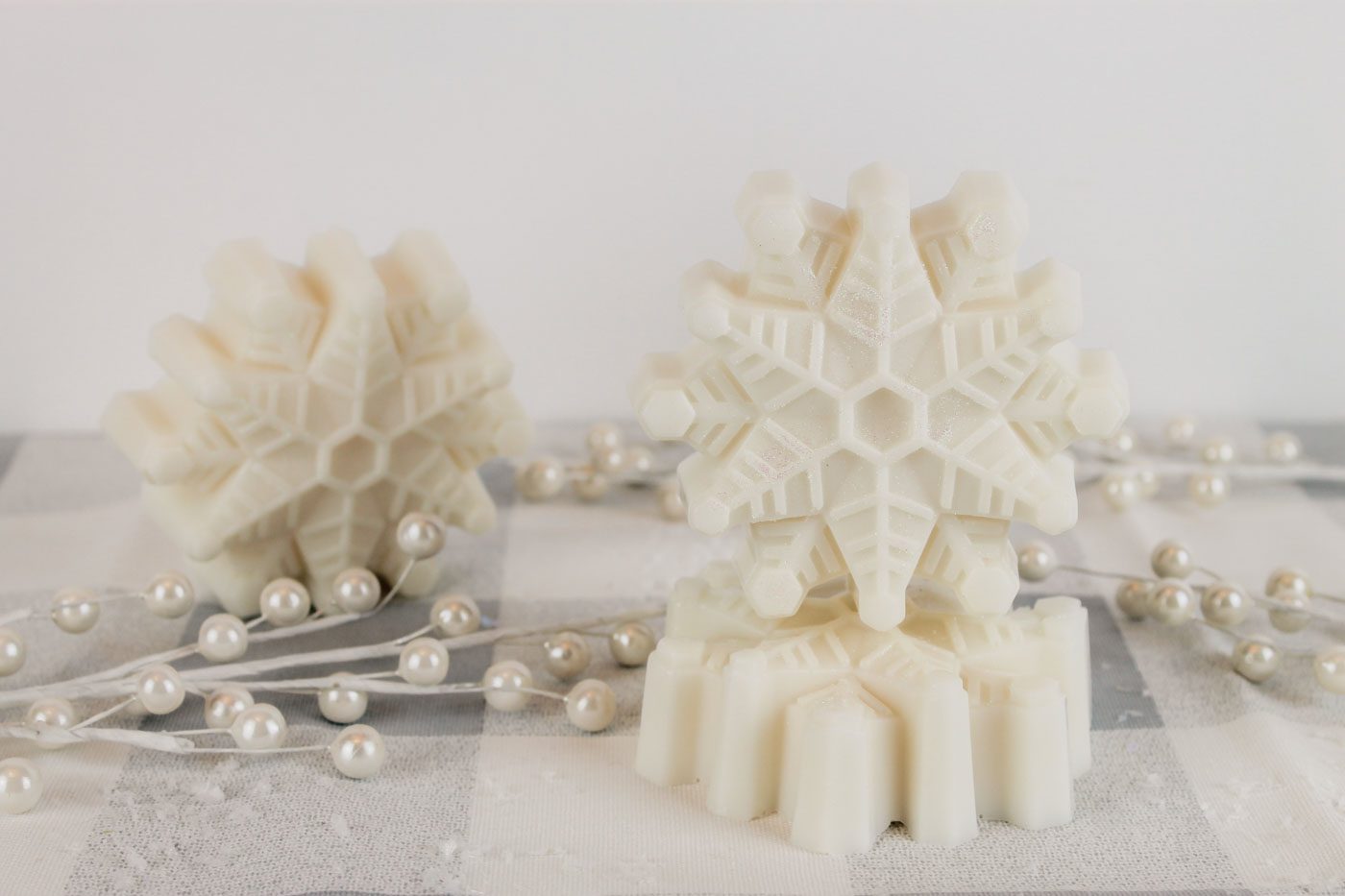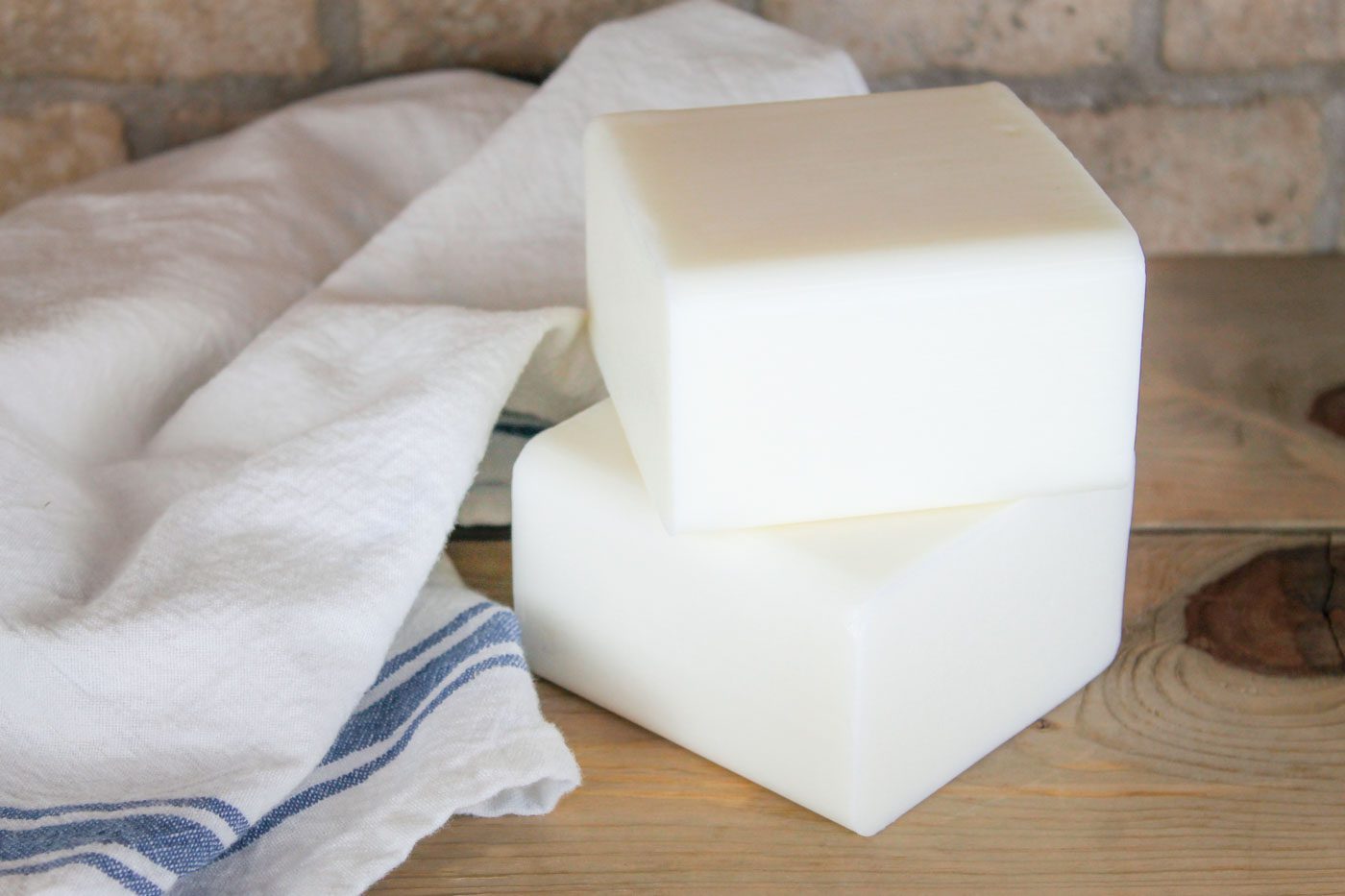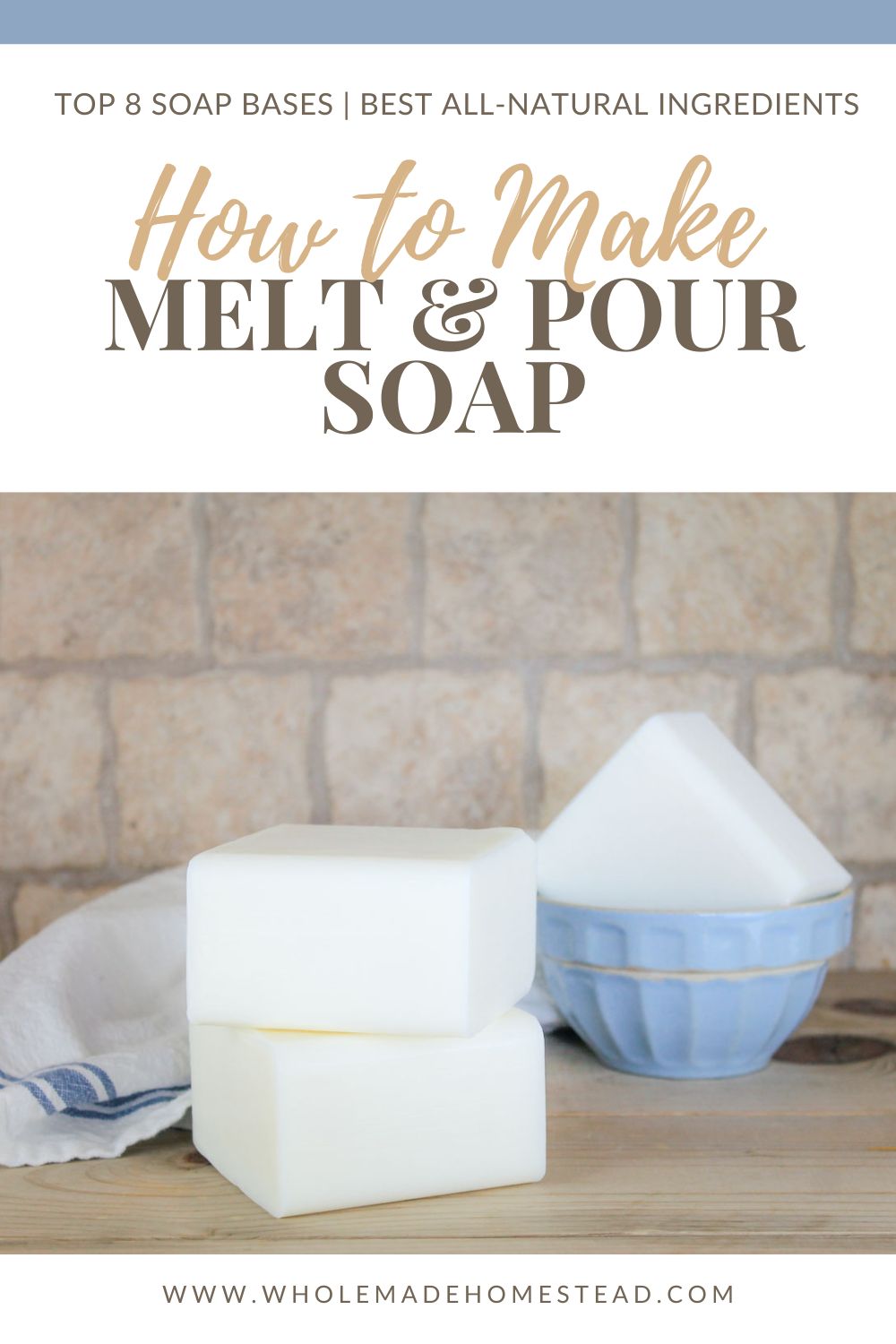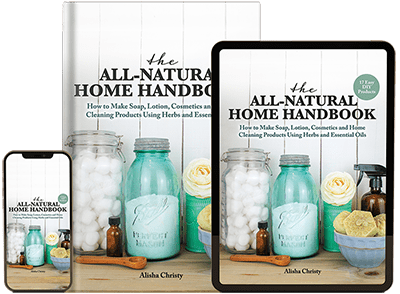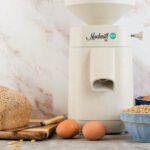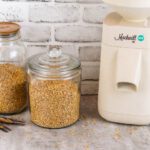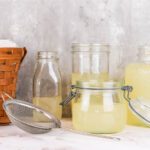Melt and pour soap bases make it easy and quick to create unique bars of soap at home using only natural ingredients like herbs, essential oils and more. Discover 8 of the most popular soap bases to use including goat’s milk, oatmeal and shea butter.
This post contains affiliate links, which means I make a small commission at no extra cost to you. In any case, I only link to products we actually use on our homestead and that I believe can truly benefit to you. See my full disclosure here.
Soap making is a pretty simple process.
At least when you’re using a melt and pour soap base.
Melt and pour soap bases have all the “scary” stuff already handled for you so you won’t need to work with lye, wear goggles or gloves and you won’t have to calculate the percentage of ingredients it takes to make soap from scratch. Instead you will get to enjoy customizing the bars of soap with your favorite scents and colors.
DIY Soap Making
To make melt and pour soap, first you’ll need to select a soap base. Goat’s milk soap is one of my preferred choices. There are an assortment of melt and pour soap base suppliers available online. Some bases use natural, non-gmo ingredients while others use detergents. Depending on your personal preference and skin type, you’ll need to find a company that sells products to fit your unique needs. Below I have a list of reputable vendors that offer an array of melt and pour soap bases.
Once you have selected a soap base, you’ll need to cut the block into 1-inch cubes to help speed up the melting process. Next, add the soap cubes into a double boiler and begin melting. When the soap has melted, you can infuse herbs or natural colorants into the soap base. Off heat, stir in anything from ground rolled oats and essential oils. Or decorate the soap with dried flowers and cosmetic glitter. There are many fun choices to choose from.
Melt and pour soap can be poured into a loaf shape mold and cut into bars or placed in a beautiful decorative silicone mold. Another bonus of using melt and pour soap bases instead of making cold or hot process soaps is that the curing time is drastically reduced. Traditional soap making can take 4-6 weeks to cure. Melt and pour means your soap is ready to be used within just a couple of hours.
If you are a beginner soap maker or you are just looking for more soap making inspiration, read on to learn how fun it is to make melt and pour soap at home.
What is Melt and Pour Soap?
Melt and pour soap is a form of soap making that is ready to be used immediately. The cold or hot process of using lye (sodium hydroxide) and the lengthy curing time has already been completed for you. All you need to do is melt the soap base and personalize it with your chosen scents, colors, exfoliants or botanicals. It is truly the easiest way to make soap at home.
Where to Buy Melt and Pour Soap Bases
- Amazon
- Our Earth’s Secrets
- Bramble Berry
- Bulk Apothecary
- Wholesale Supplies Plus
Melt and Pour Soap Making Additives
There are a variety of ingredients you can add into melt and pour soap recipes to customize them to fit your unique needs. Here are a few ideas for soap making additives:
- Dried herbs such as calendula, chamomile, comfrey, sage, thyme or dandelion
- Dried flowers for decorating
- Oats
- Ground coffee
- Poppy seeds
- Essential oils
- Natural clays such as French green clay
- Honey
- Fruit or vegetable powders for natural colorants
- Cosmetic glitter
Top 8 Melt and Pour Soap Bases
1. Goat’s Milk Melt and Pour Soap Base
Goat’s milk soap is my absolute favorite melt and pour soap base when making soap at home. It is incredibly nourishing, contains real goat’s milk and a healthy fat which helps to soothe and moisture skin. I love to infuse herbs from my garden into the soap base and I often add a bit of ground rolled oats into my recipes for gentle exfoliation. Check out this homemade soap recipe using goat’s milk to start making your own melt and pour soap.
Features: Colors well, has a neutral odor, very moisturizing, excellent lather, works well when poured into silicone molds or sliced from a loaf, great for all skin types
2. Oatmeal Melt and Pour Soap Base
This melt and pour soap base contains oatmeal which makes it a great mild exfoliant. Oatmeal is well known for soothing dry, irritated or inflamed skin. Chamomile, honey, lavender, orange essential oil, cinnamon essential oil and sweet almond oil all pair well with a bar of oatmeal soap.
Features: White in color, leaves your skin feeling smooth and soft, soap base is often mixed with nourishing shea butter
3. Honey Melt and Pour Soap Base
When you open a bar of honey melt and pour soap base you will notice it has an amber color and is somewhat glassy looking. Honey is high in nutrients and has antibacterial properties. When looking for a honey melt and pour soap base make sure you purchase a block that uses 100% pure honey.
Features: Great cleanser, beautiful color, good lather
4. Clear Melt and Pour Soap Base
The clear soap base is an excellent choice when you want to make a vibrantly colored bar of soap. Add natural colorants such a red Brazilian clay or lemon peel powder to change the transparent soap bar into a bright, beautiful color.
Features: Impeccable clarity, creates vivid colors, no odor, fine for most skin types
5. Shea Butter Melt and Pour Soap Base
I enjoy adding shea butter to many of my homemade skin care products. You’ll find shea butter in my whipped body butter, lotion bars, lip balm and salves. Shea butter is high in vitamin E and vitamin A and is an excellent soap base choice when making melt and pour soap bars. Try my milk and honey soap recipe using shea butter.
Features: Moisturizing, helps to sooth dry and chapped skin, good foaming properties
6. Coconut Milk Melt and Pour Soap Base
Moisturizing, with a creamy lather, coconut milk melt and pour soap base is very versatile. It can be used to make a great body bar but I’ve also heard from the Willow and Sage magazine that it is wonderful for washing dishes.
Features: Feels great on your skin, suitable for most skin types, odor free
7. Aloe Vera Melt and Pour Soap Base
Aloe vera melt and pour soap is a type of base that has aloe vera added into it. The aloe vera gel turns the soap a slight green color. Aloe is known to treat thermal burns and can help soothe sunburns.
Features: Gentle soap, semitransparent soap base, good for those with sensitive skin
8. Cocoa Butter Melt and Pour Soap Base
This lightly scented cocoa butter melt and pour soap base is white in color, leaves since feeling extra smooth and pairs well with peppermint essential oil. In many of my all-natural skin care recipes, you will find unrefined cocoa butter due to its ability to protect skin. Learn how to make a simple snowflake soap using cocoa butter melt and pour soap base in this beginner soap tutorial.
Features: Subtle smell of chocolate, creamy lather, excellent cleanser
Other Types of Melt and Pour Soap Bases
- Hemp Soap Base
- Donkey’s Milk Soap Base
- Olive Oil Soap Base
- White Soap Base
- Buttermilk Soap Base
- Castile Soap Base
- Triple Butter Soap Base
FAQ
Does Melt and Pour Soap Contain Lye?
Yes. Cold and hot process soaps are made from scratch using lye and other various ingredients. Using a melt and pour soap base, does not require you to handle lye because that step was already completed during the process of making the soap base.
Does Melt and Pour Soap Base Expire?
Technically melt and pour soap bases never go bad. That is they won’t mold or become toxic to use however they will dry out and can easily crumble which makes them more difficult to use in soap making.
Does Melt and Pour Soap Have to Cure?
No. Unlike cold process and hot process soaps that often need weeks to cure, melt and pour soap can be used as soon as it solidifies in your chosen mold.
How Long Does it Take for Melt and Pour Soap to Harden?
The amount of time it takes for the melt and pour soap to solidify depends on the size of mold you are using and the temperature of the room. Small soaps can be ready to use in as little as 1-3 hours. Larger loaf soaps poured into thick wooden or plastic molds will take longer to harden, approximately 4-8 hours.
Can Melt and Pour Soap Be Remelted?
If you make a mistake or your soap didn’t quite turn out like you had planned, you can simply remelt the melt and pour soap base.
What Temperature Does Melt and Pour Soap Melt At?
Generally 120°-142° F but every soap base is a little different.
How to Naturally Color Soap
There are a variety of all-natural clays, herbs and fruit and vegetable powders that can be used to naturally color soap. Check out this article on how to color soap using dried tomatoes.
How to Make Melt and Pour Soap Lather More
Adding agave nectar or honey to your homemade melt and pour soap recipe can help to increase the lather. 1 teaspoon per pound of melt and pour soap base is recommended.
More Natural Skincare Recipes
Vanilla Mocha Melt and Pour Soap Recipe
Homemade Peppermint Clove Soap

